Effective July 1, 2013, two new disclosures will be required in certain commercial real estate leasing, sale or finance transactions in California. Under Senate Bill (SB) 1186, property owners will need to include a disclosure in all commercial leases or lease amendments stating whether the property has been inspected by a Certified Access Specialist (CASp) and, if so, whether the property is in compliance with construction-related accessibility standards. Under Assembly Bill (AB) 1103, prior to the leasing, sale or finance of an entire commercial building, the landlord, seller or borrower is required to disclose certain energy use information.
Accessibility Inspection Disclosure (SB 1186)
All leases or lease amendments for commercial property entered into on or after July 1, 2013, must disclose whether the property has been inspected by a Certified Access Specialist (CASp) and, if it has, the disclosure must state whether or not the property was determined to be in compliance. Property owners in California have long been faced with the general requirement that their property must comply with the Americans with Disabilities Act (ADA) and the Unruh Civil Rights Act, which impose specific building requirements intended to allow equal access by disabled persons. A violation of the ADA can result in litigation against the property or business owner by private individuals. The abuse of these laws by “professional plaintiffs” has become increasingly alarming to property and business owners in California.
In response to this abuse and resulting concern, SB 1186 was signed into law as comprehensive legislation that is intended to maintain “the hard-fought civil rights of the disabled community while helping to protect California businesses from predatory demand for money letters and lawsuits” often seeking to obtain a quick settlement for a technical violation of the ADA. As part of this comprehensive legislation, which addresses a broad range of issues related to so-called “ADA litigation,” the legislature included a requirement that property owners provide written disclosures in their leases and lease amendments stating whether the property has or has not been inspected by a CASp inspector and, if it has, whether or not the property meets construction-related accessibility standards. It will remain a property owner’s decision whether or not to have its property inspected by a CASp inspector to take advantage of some of the incentives for doing so. However, property owners should keep in mind that while the inspection is voluntary, the disclosure requirement is not. While SB 1186 does not prescribe any specific penalties or consequences for noncompliance with the disclosure requirements, there are incentives built into the legislation that are intended to encourage inspections by a CASp inspector. Some of the incentives to property owners who timely correct ADA violations or have had their property inspected by a CASp inspector prior to being served with a complaint by an ADA plaintiff include reduced statutory damages or a stay of proceedings. ADA plaintiffs must now also specifically identify the alleged “access barrier” encountered and the date of the alleged violation.
Energy Use Disclosure (AB 1103 / AB 531)
AB 1103, together with later adopted Assembly Bill 531, is known as the “Non Residential Building Energy Use Disclosure Program.” Effective July 1, 2013, the Non Residential Building Energy Use Disclosure Program requires that California property owners with buildings of a total gross area of more than 50,000 square feet must disclose the energy data for a building for the prior 12 months, together with information regarding the building’s operating characteristics and ENERGY STAR Energy Performance Score, prior to any sale, lease of the entire building to a single tenant or the financing of the entire building. The same disclosure obligations will apply to buildings with a total gross floor area between 10,000 and 50,000 square feet beginning January 1, 2014, and for buildings between 5,000 and 10,000 square feet beginning July 1, 2014. The disclosure is required to be made to a prospective purchaser or full building tenant no later than 24 hours prior to the execution of a lease or purchase agreement and to a prospective lender no later than the submittal of the loan application.
To comply with the Non Residential Building Energy Use Disclosure Program, building owners must open an account for the building at the ENERGY STAR Portfolio Manager Website, operated by the U.S. Environmental Protection Agency, no later than 30 days prior to the date the disclosure is required. Certain information concerning the building must be provided in order to open an account, including owner contact information, building name, address, year of construction, all sources of energy use data for the building and space use characteristics. Through the account, the building owner should request that all utility companies providing energy to the building provide the owner with the energy use data for the building for at least the most recent 12 months.
Under the law, the utility companies are required to provide the data through the account within 30 days of the date of the request. Once the utility companies provide the data, the owner must log back into the account, complete a compliance report and download the following Energy Use Materials:
- Disclosure Summary Sheet: A two-page document prepared by the California Energy Commission describing the contents and relevance of the disclosures generated by the Portfolio Manager website.
- Statement of Energy Performance: A report generated by the Portfolio Manager website that provides data about the building’s energy performance.
- Data Checklist: A report generated by the Portfolio Manager website that summarizes the building’s physical and operating characteristics.
- Facility Summary: A report generated by the Portfolio Manager website that summarizes the space and energy usage of the building and compares that data to national medians.
The Energy Use Materials must be provided to prospective full-building tenants, purchasers or lenders within the deadlines described above. The stated purpose for AB 1103 is to promote energy efficiency by allowing building owners and operators to compare their building’s performance to similar buildings, to manage the energy costs of their buildings and also to provide building operators with information needed to justify financial investment. Similar to SB 1186, AB 1103 does not specify any penalty or consequences for failure to comply with the disclosure obligations. However, that may change over time and we recommend that property owners comply with the disclosure requirements, as they may be considered “material” facts that must otherwise be disclosed under California law. It is also advisable to update purchase agreements and leases with an acknowledgement that the disclosure has been made.
The underlined hyperlinks above are provided for your convenience to review Energy Star Portfolio Manager and sample Energy Use Materials.
If you have any questions regarding SB 1186, AB 1103, their disclosure requirements or any language that may need to be updated in your legal documents, please contact an attorney in our transactional real estate department.







